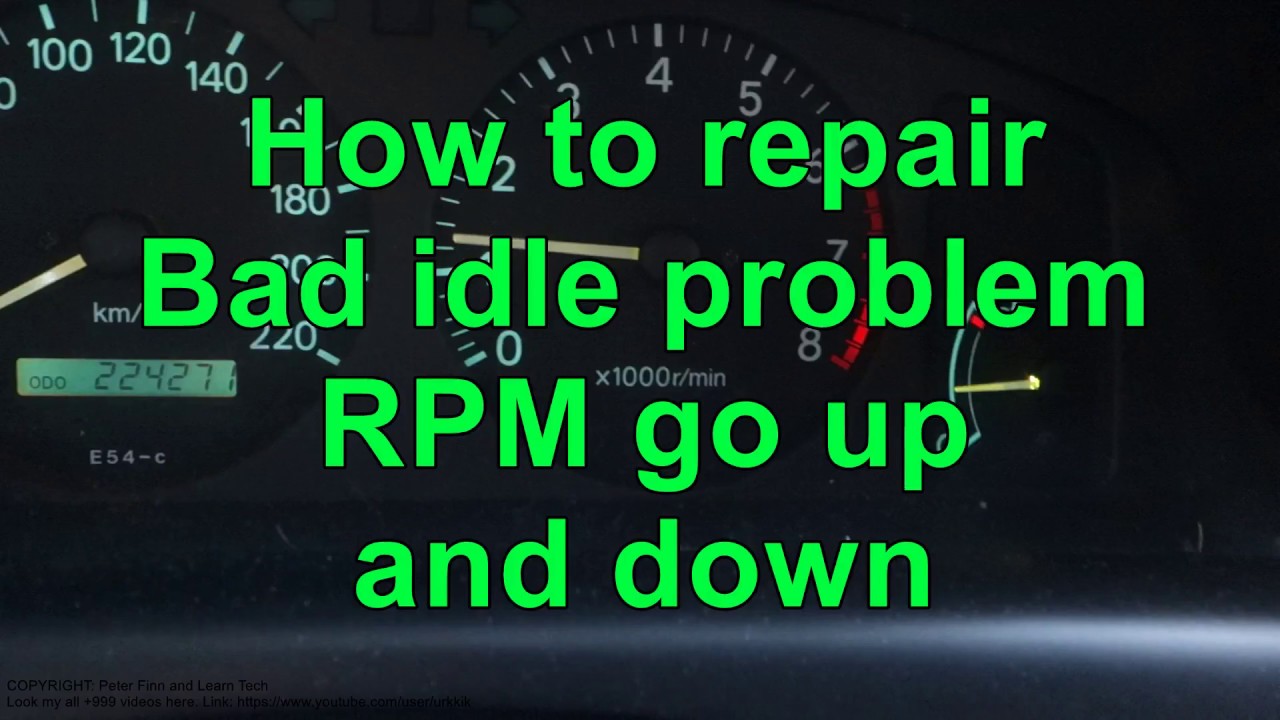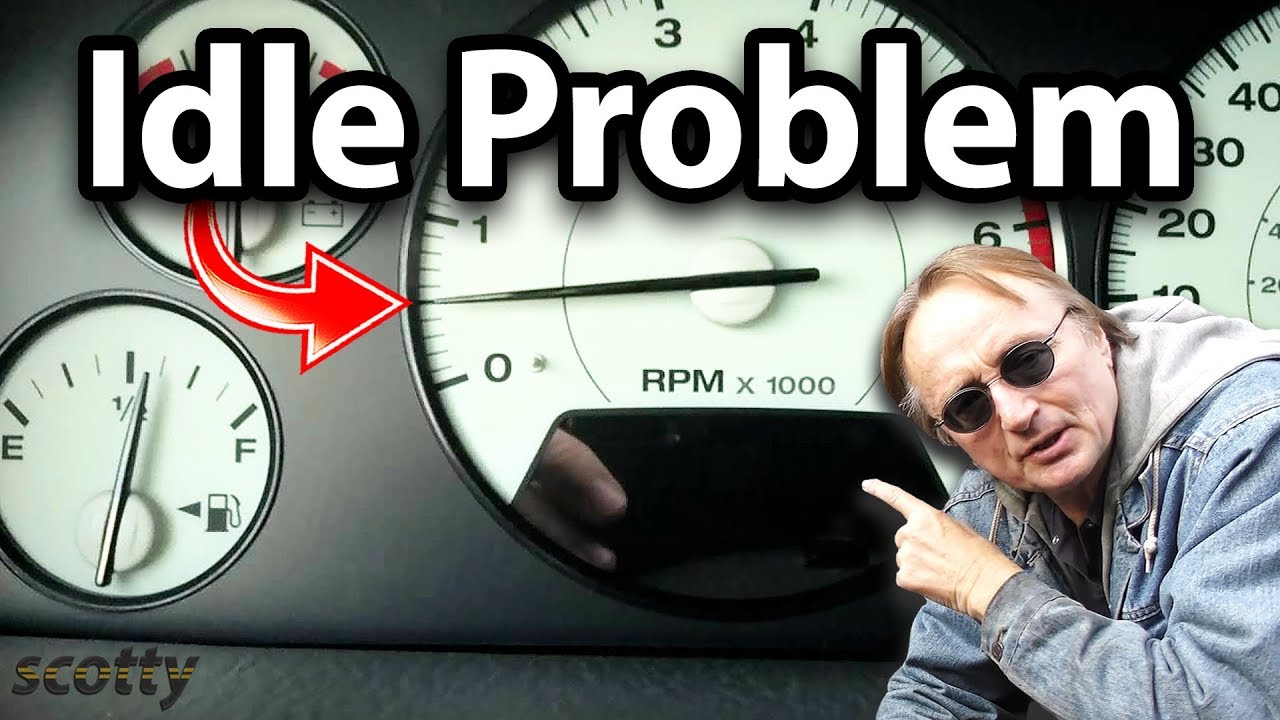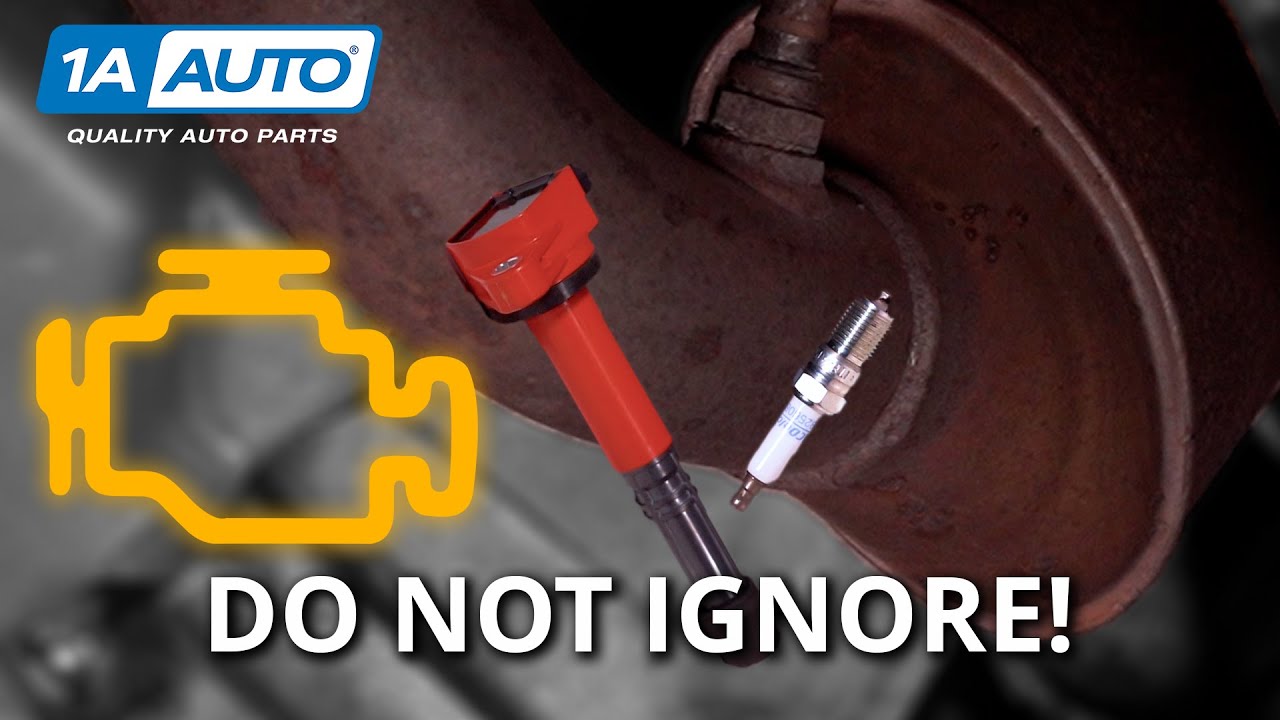Experience a smoother drive with our expert guide on tackling RPM fluctuations during acceleration. Discover the secrets behind your car’s erratic RPM behavior and learn simple, effective fixes to keep your journey jerk-free and enjoyable. Say goodbye to those shakes and shudders – your solution starts here!
What Does “RPM” Mean?
RPM stands for “Revolutions Per Minute.” It is a unit of measurement used to describe the rotational speed of an object, typically referring to the number of revolutions or rotations it completes in one minute.
RPM is commonly used to measure the speed of engines, such as those found in vehicles, power tools, or industrial machinery. In the context of an engine, RPM refers to the number of times the crankshaft rotates in one minute. The crankshaft is a crucial component that converts the reciprocating motion of the pistons into rotational motion, which ultimately powers the vehicle or equipment.
RPM is an essential parameter in understanding and controlling the performance of an engine. It is often displayed on a tachometer or RPM gauge in vehicles, allowing drivers to monitor the engine speed. The appropriate RPM range varies depending on the specific engine and its intended use.
For example, the RPM range for normal driving in a passenger car might be around 1,000 to 3,000 RPM, while it could extend higher in a high-performance sports car.
Causes of RPM Fluctuation At Constant Speed
RPM fluctuation at a constant speed can be caused by a variety of factors, including:
1. Combustion issues
RPM fluctuations can occur when the engine’s combustion is not operating optimally. One common cause is a dirty air filter that restricts airflow into the engine. A clogged air filter limits the amount of oxygen available for combustion, leading to an irregular burn and RPM fluctuations.
Similarly, a clogged fuel injector can disrupt the proper atomization and delivery of fuel, resulting in incomplete combustion and engine misfires. Additionally, a malfunctioning oxygen sensor can provide incorrect feedback about the air-fuel mixture, causing the engine to adjust improperly and leading to RPM fluctuations.
2. IAC and ECU communication gap
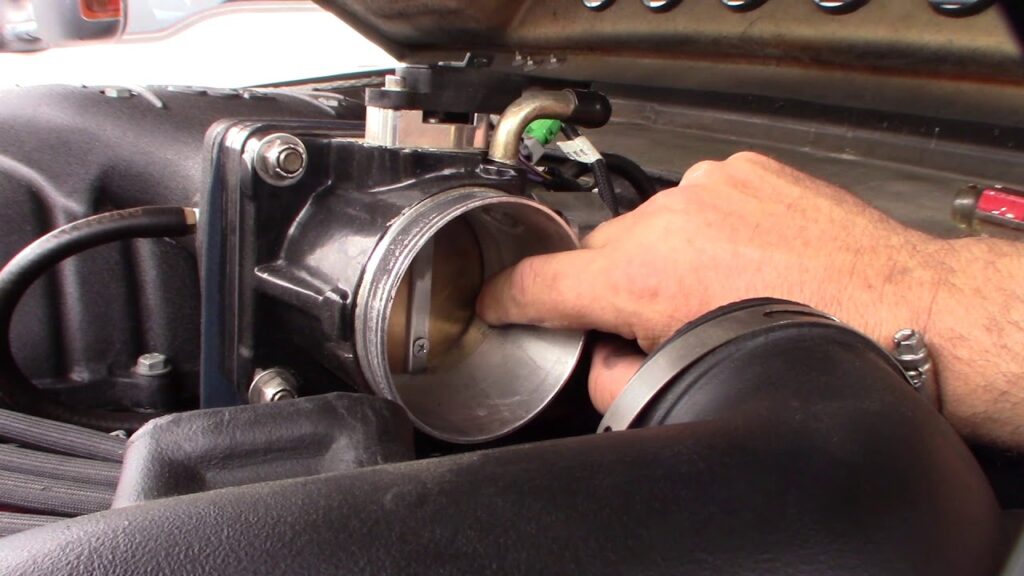
The idle air control (IAC) valve and electronic control unit (ECU) regulates the engine’s idle speed. However, a communication gap between these two components can lead to RPM fluctuations. The IAC valve adjusts the amount of air entering the engine during idle conditions while the ECU monitors various sensors to determine the correct idle speed.
Suppose there is a breakdown in communication between the IAC valve and the ECU. In that case, the engine may receive conflicting signals or fail to receive instructions altogether, resulting in erratic RPM behavior. Faulty wiring connections, sensor malfunctions, or a malfunctioning ECU can cause this communication gap.
3. Worn-out spark plugs
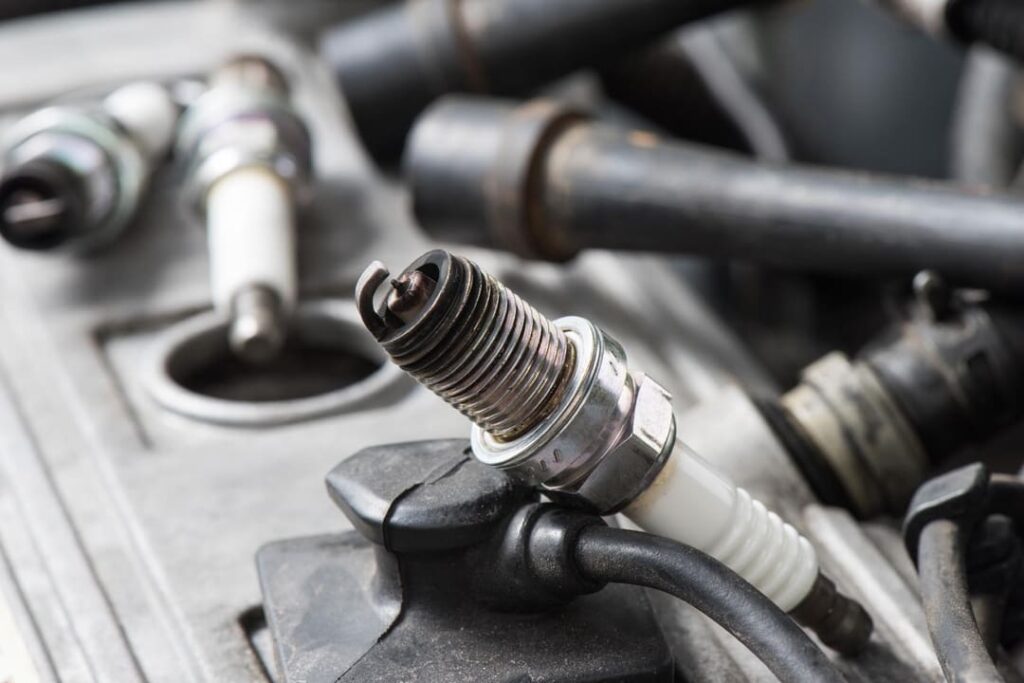
Over time, spark plugs can wear out and develop issues that consistently affect their ability to ignite the air-fuel mixture. When spark plugs become worn, they can misfire or produce weak sparks, causing RPM fluctuations. This is particularly noticeable during cruising at a constant speed when the engine relies on consistent combustion for smooth operation.
4. Dirty throttle body
The throttle body controls the amount of air that enters the engine. If the throttle body becomes dirty or clogged with carbon deposits, it can disrupt the airflow and cause RPM fluctuations. A dirty throttle body may result in the engine receiving too much or too little air, leading to an imbalance in the air-fuel mixture and inconsistent combustion.
5. PCM Failure
In some cases, the PCM (Powertrain Control Module) of a vehicle may experience circuit failures, leading to a compromised response to certain signals and inputs. This can result in various issues related to drivability, including those that impact the engine’s operational speed.
6. Faulty sensors
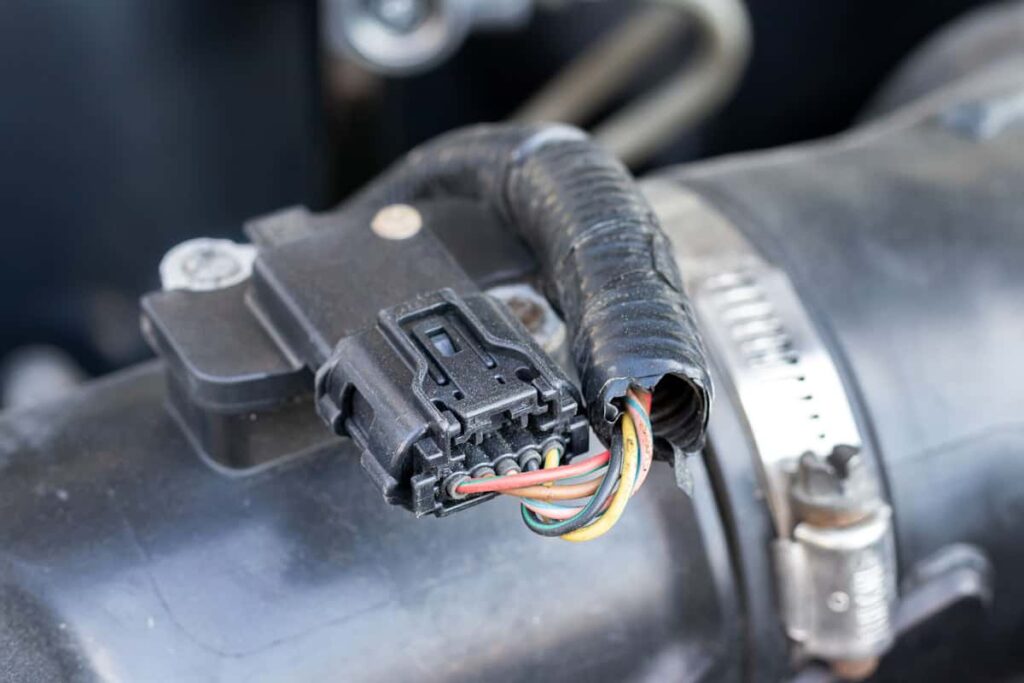
Various sensors in the engine play a crucial role in providing information to the ECU for proper fuel and air mixture regulation. However, if sensors such as the throttle position sensor or mass airflow sensor malfunction, they can send incorrect data to the ECU. This can lead to the engine receiving inaccurate information about the throttle position or the amount of air entering the engine, causing RPM fluctuations.
7. Failing Engine Speed Sensor
Most modern engines rely on dedicated speed sensors, such as the camshaft and crankshaft sensors, to monitor the engine’s rotational speed. When these sensors start to malfunction or fail, a range of unusual symptoms can manifest.
8. Vacuum leaks
Vacuum leaks occur when there are unintended openings or cracks in the intake manifold or vacuum lines, allowing extra air to enter the engine. These leaks can disrupt the proper functioning of the air-fuel mixture and cause RPM fluctuations. The additional air entering the engine without passing through the throttle body can result in an imbalanced air-fuel mixture and irregular combustion.
How to Fix RPM Fluctuation At Constant Speed
To fix RPM fluctuations at a constant speed, you can take the following steps:
- Check and replace the air filter: A dirty or clogged air filter can restrict airflow into the engine, leading to improper combustion and RPM fluctuations. Inspect the air filter and replace it if necessary, following the manufacturer’s recommendations.
- Clean or replace the fuel injectors: Clogged or malfunctioning fuel injectors can disrupt the proper delivery of fuel into the combustion chamber, causing misfires and RPM fluctuations. Consider using a fuel injector cleaner or have a professional clean or replace the injectors if needed.
- Inspect and replace worn-out spark plugs: Worn-out spark plugs can misfire and result in RPM fluctuations. Check the condition of the spark plugs and replace them if they show signs of wear or damage. Ensure that you use the correct type and gap recommended by the manufacturer.
- Clean the throttle body: A dirty throttle body can disrupt the airflow and affect the air-fuel mixture, leading to RPM fluctuations. Remove the throttle body and clean it using a throttle body cleaner according to the manufacturer’s instructions.
- Check and replace faulty sensors: Malfunctioning sensors like the throttle position sensor or mass airflow sensor can provide incorrect information to the engine control unit, leading to RPM fluctuations. Use diagnostic tools to identify any faulty sensors and replace them as needed.
- Inspect for vacuum leaks: Vacuum leaks can cause irregular airflow and RPM fluctuations. Check the intake manifold, vacuum lines, and gaskets for any signs of leaks or damage. Repair or replace the affected components to eliminate vacuum leaks.
- Ensure proper communication between the IAC valve and ECU: Check the wiring and connections between the idle air control (IAC) valve and the electronic control unit (ECU). Any communication gap can disrupt idle control and cause RPM fluctuations. Repair or replace any faulty wiring or components to establish proper communication.
Is It Normal for RPM to Fluctuate When the A/C Is On?
Yes, it is normal for the RPM (revolutions per minute) to fluctuate slightly when the air conditioning (A/C) is turned on. When the A/C compressor engages, it places an additional load on the engine as it requires power to operate. This extra load can cause a minor drop in engine RPM.
To compensate for the increased load and maintain proper engine performance, the engine control unit (ECU) will adjust the throttle opening and fuel delivery to stabilize the RPM. As a result, you may notice a slight fluctuation in the RPM, typically within a small range.
What are Normal Idle RPM Values?
The normal idle RPM (Revolutions Per Minute) values for vehicles can vary depending on factors such as the engine type, make and model of the vehicle, and any specific modifications or adjustments made.
- Gasoline-Powered Vehicles: The normal idle RPM range for most gasoline-powered vehicles falls between 600 and 1000 RPM. However, it’s important to note that the idle speed can vary depending on factors such as engine displacement, number of cylinders, and vehicle age. Newer vehicles with electronic engine management systems often have more precise control over the idle speed.
- Diesel-Powered Vehicles: Diesel engines typically have higher idle RPM values compared to gasoline engines. The idle speed for diesel vehicles can range from 700 to 1200 RPM or higher. Again, the specific idle speed can vary depending on the engine design and vehicle model.
FAQs
Why are the RPMs fluctuating at a constant speed?
RPM fluctuations at a constant speed can be caused by various factors, including combustion issues, communication gaps between components, worn-out spark plugs, dirty throttle body, faulty sensors, and vacuum leaks. These issues can disrupt the engine’s performance and lead to irregular RPMs.
Can RPM fluctuations be fixed without professional help?
In some cases, simple maintenance tasks such as replacing the air filter, cleaning the throttle body, or replacing spark plugs can resolve minor RPM fluctuations. However, more complex issues may require professional help. If the problem persists after basic maintenance, it’s advisable to consult a qualified mechanic or technician who can diagnose and fix the underlying cause of the RPM fluctuations.
How much does it cost to fix RPM fluctuations?
The cost of fixing RPM fluctuations can vary depending on the specific cause and the extent of the issue. Simple maintenance tasks like replacing an air filter or spark plugs are relatively inexpensive. However, if the problem requires more extensive repairs, such as replacing sensors or addressing vacuum leaks, the cost can increase. It’s best to consult with a professional who can provide an accurate assessment and estimate for the repairs.
Are RPM fluctuations dangerous for my vehicle?
While RPM fluctuations themselves may not be immediately dangerous, they can indicate underlying issues with the engine’s performance. Ignoring RPM fluctuations for an extended period can lead to more serious problems and potential damage to engine components. It’s recommended to address the issue promptly to avoid further complications.
How can I prevent RPM fluctuations in the future?
Regular vehicle maintenance is key to preventing RPM fluctuations. Some preventive measures include following the recommended maintenance schedule, keeping the air filter clean, using high-quality fuel, maintaining spark plugs, and periodically cleaning the throttle body. Additionally, addressing any warning signs promptly and consulting a professional for any unusual engine behavior can help prevent RPM fluctuations and other related issues.
Conclusion
In conclusion, RPM fluctuations at a constant speed can be caused by various factors related to combustion, communication gaps between components, worn-out parts, sensor malfunctions, or vacuum leaks. These issues can disrupt the engine’s performance and lead to irregular RPMs, impacting the vehicle’s smooth operation. It is important to address these issues promptly to prevent further complications and potential damage to engine components.

